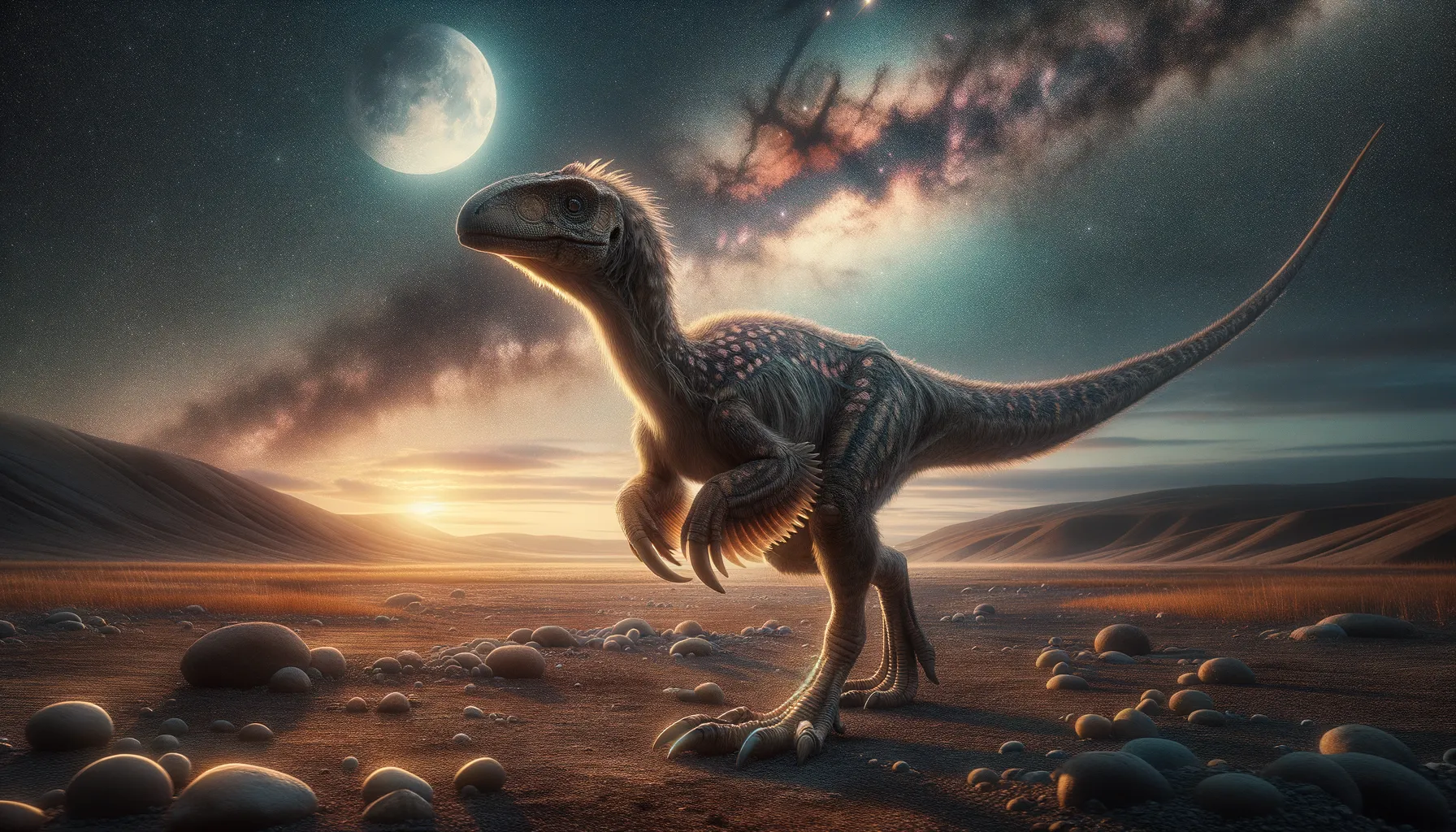
Shuvuuia
Swift, agile, and built for the nighttime.
Period
Cretaceous
Length
Around 60 centimeters (24 inches).
Height
Stood about half a meter tall.
Weight
Approximately 1.5 kilograms (3.3 pounds).
Shuvuuia was a small, bird-like dinosaur that lived during the Late Cretaceous period. Distinguished by its peculiar combination of features, it had long legs ideal for running and short, powerful forelimbs equipped with a strong claw. This nocturnal creature is thought to have been a stealthy hunter, benefiting from keen senses in low-light conditions. Its fossil discoveries have been primarily in Mongolia, enlightening paleontologists on the diversity of theropod dinosaurs.
Diet
Shuvuuia likely fed on insects and small vertebrates. Its diet would have consisted of anything it could catch and consume using its quick reflexes.
Hunting
Primarily a nocturnal hunter, it would have relied on its speed and enhanced senses to catch prey. Using its powerful forelimbs, it could dig or extract hidden prey from their shelters.
Environmental challenges
Living in arid to semi-arid environments, Shuvuuia faced the challenge of scarce water sources. The landscape could have fluctuated between dry and slightly more temperate climates, requiring it to adapt its behavior for survival. Changes in vegetation and the presence of larger predators would have influenced its life significantly.
Speed
Quick and nimble, capable of fast sprints.
Lifespan
Estimated to be around 10 to 20 years.
First discovery
Discovered in the late 20th century in Mongolia.
Fun Facts
- Shuvuuia was a small dinosaur about the size of a chicken, making it one of the smaller members of the dinosaur world.
- It lived in the late Cretaceous period, around 85 to 75 million years ago, in what is now Mongolia.
- Shuvuuia had long legs and was likely a fast runner, which would have helped it catch small prey or escape predators.
- It had a beak and is thought to have eaten insects and small animals, using its strong clawed hands to dig them out.
- The name 'Shuvuuia' comes from the Mongolian word 'shuvuu', meaning 'bird', reflecting its bird-like features.
- Shuvuuia's large eyes suggest it may have been active at night, making it one of the few known nocturnal dinosaurs.
- Its remarkable hearing abilities were similar to those of a barn owl, allowing it to hunt in the dark.
Growth and Development
Hatchlings likely grew rapidly to counter the threats from predators. Fossil evidence suggests that young Shuvuuia had to quickly learn the survival skills necessary for catching prey. As they matured, they developed their distinctive physical characteristics that aided them in their unique lifestyle.
Habitat
Shuvuuia inhabited what we now know as the Gobi Desert region of Mongolia. It adapted well to sandy and scrubby landscapes where it could effectively blend into its surroundings. Its small size and agile movement enabled it to navigate through dense vegetation and open spaces alike.
Interaction with other species
Due to its small size, Shuvuuia had to avoid larger carnivorous dinosaurs and other predators. Interactions may have included competitive encounters with other small insectivorous dinosaurs. It probably utilized its stealth and speed to minimize dangerous encounters and maximize its hunting success.
Natural lifespan
In the wild, it may have lived up to 20 years given the right conditions.
Reproduction
Reproduction involved laying eggs, likely in concealed nests to protect from predators. Parental care is a possibility, with adults possibly guarding or incubating their eggs until hatching. Nesting sites were probably chosen based on safety and food availability.
Social behaviour
Shuvuuia may have displayed solitary behavior, with occasional group interactions particularly during breeding seasons. If they lived in small groups, cooperation might have been limited to specific contexts such as defense or during young rearing.
Fossil locations
Fossils of Shuvuuia have been predominantly found in the Mongolian Gobi Desert. These fossils are significant because they provide insight into the adaptability and diversity of small theropods during the Late Cretaceous period. Their excavation sites are crucial in understanding the ecological dynamics of the era.
